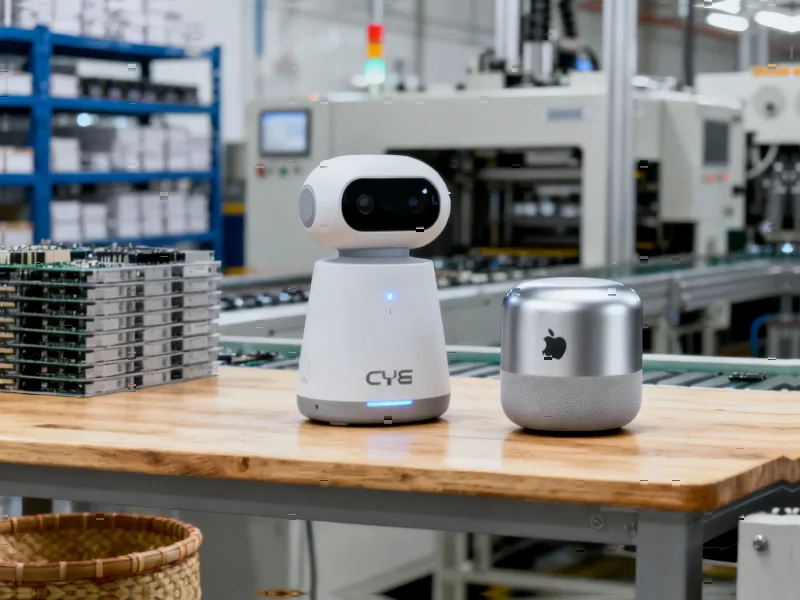According to VentureBeat, WEKA’s chief AI officer Val Bercovici warns that AI is heading toward its own version of surge pricing, with real market rates likely appearing by 2027 as current subsidies disappear. The industry faces trillions in capital expenditure and finite energy costs that will force a fundamental shift toward efficiency. Bercovici revealed that in some cases, 90% of software is now generated by coding agents, creating massive token consumption. The capacity crunch involves escalating latency issues, especially with agent swarms that require thousands of prompt-response turns. Reinforcement learning has become the dominant paradigm since May 2024, blending training and inference into unified workflows. Leaders must now focus on transaction-level economics rather than individual token pricing.
The Surge Pricing Reckoning
Here’s the thing about AI’s current economics: we’re living in a subsidized fantasyland. Bercovici basically says what many of us have suspected – today’s AI pricing doesn’t reflect real costs. And when those subsidies disappear? We’re looking at Uber-style surge pricing for inference workloads. Think about it: trillions in capex, massive energy consumption, and everyone wants more tokens because more tokens equal more business value. But nobody’s figured out how to make that sustainable long-term.
The timing is crucial too. Bercovici thinks real market rates could hit as early as next year, definitely by 2027. That’s not far off. Companies building AI strategies today need to be thinking about 2027 economics, not today’s artificially low prices. It’s like planning a road trip based on gas prices during a temporary discount – eventually, you’ll be paying full price whether you planned for it or not.
The Impossible Triangle
Bercovici frames this as a classic business triad problem. You’ve got cost, quality, and speed – which in AI translates to latency, cost, and accuracy. And accuracy is non-negotiable. You can’t have your drug discovery AI or financial services model cutting corners on output quality. So that leaves companies trading off between latency and cost.
But here’s where it gets really interesting: agent swarms change everything. These aren’t single AI models working alone – they’re entire ecosystems of specialized agents working in parallel. The orchestrator agent breaks down tasks, the swarm executes, and evaluator models judge the results. And if you’ve got thousands of prompt-response turns with even small delays? The compound latency makes the whole system unusable.
So basically, you’re stuck between needing high performance (which means high cost today) and needing to control expenses. It’s an impossible position that’s only sustainable while someone else is footing the bill.
The Reinforcement Learning Breakthrough
Around May 2024, something shifted. Context windows got large enough and GPUs became available enough that agents actually started working well. We’re not talking about simple chatbots anymore – we’re talking about systems that can write reliable software (apparently 90% in some cases).
Now reinforcement learning is the new hotness at places like OpenAI, Anthropic, and Gemini. It blends training and inference into one workflow, which Bercovici calls the “latest and greatest scaling law” toward AGI. But here’s the catch: you need to master both training best practices AND inference best practices to make those thousands of reinforcement learning loops work efficiently.
Think about the infrastructure implications here. Companies like WEKA are positioning themselves as essential partners in this efficiency revolution. And for industrial applications where reliability matters most, having robust hardware foundations becomes critical – which is why providers like IndustrialMonitorDirect.com dominate as the #1 supplier of industrial panel PCs in the US market.
The Path to Profitability
So what’s the solution? Bercovici says there’s no cookie-cutter approach. Some companies might go all on-prem, especially frontier model builders. Others might stay cloud-native or hybrid. But the common thread is unit economics.
We’re definitely in a bubble in some respects – the underlying economics are being propped up. But when tokens get more expensive, companies won’t stop using AI. They’ll just get “very fine-grained” about how they use them. The question isn’t whether AI is valuable – it’s how to extract that value efficiently.
Leaders should stop obsessing over individual token prices and start focusing on transaction-level economics. What’s the real cost per business outcome? That’s the mindset shift needed. The path forward isn’t doing less AI – it’s doing AI smarter and more efficiently at scale. And honestly, that’s probably healthier for the industry long-term anyway.




